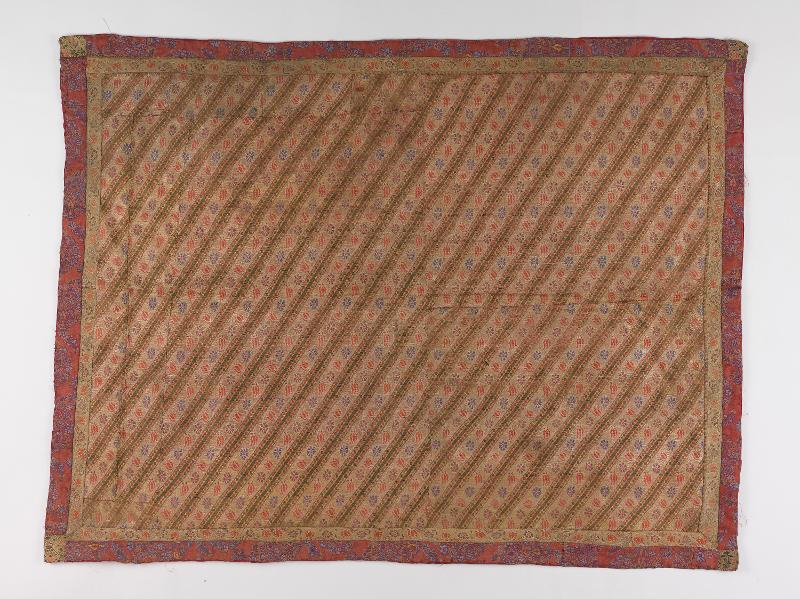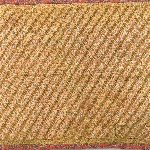| Native Name | Savai | Naqsh |
| Object Number | A590 |
| Current Location | Collections Storage |
| Culture | Indian | Persian |
| Provenience | India | Iran |
| Period | 19th Century |
| Date Made | 19th Century |
| Section | Asian |
| Materials | Silk | Cotton | Silver Thread |
| Technique | Brocade | Dyed | Woven | Sewn |
| Iconography | Floral |
| Description | Square cover of silk brocade woven with metal-wrapped thread. Field patterned with a design of narrow diagonal stripes patterned with scrolling floral designs typical of the Persianate style. Silver gilt-wrapped yellow threads form a golden ground; most of the metal has worn off. The flowers are woven with orange-pink, dusty purple, and light blue-colored threads and outlined in white. The cover has been stitched together in multiple pieces, and bordered with a brocaded red silk twill patterned with boteh (paisley) motifs. An additional interior trim of silk brocade woven with metal-wrapped thread and patterned with a scrolling floral vine can be seen on two ends. The fabric used for the main field of object number A585, another cover, has been repeated to form the corners. These silk brocades, called termeh when patterned with boteh, were a specialty of Kashan and Isfahan in Iran (Persia) dating back to at least the seventeenth century. Used primarily for luxury garments, they were often repurposed into decorative covers. When patterned with diagonal parallel bands filled with close floral ornamentation, they are referred to as naqsh (naqshe, nakshe), meaning ‘embroidery’ or ‘ornament’ in Farsi, and commonly known in Iran as ‘Isfahani.’ Naqsh is a term particularly applied to embroidered fabrics for nineteenth-century women’s trousers, but it is likely that the designs are related to woven versions in Safavid and later Qajar Iran. By the end of the twentieth century, naqsh was mostly woven. This cover has been backed with blue twill cloth bordered with a plain-weave cloth dyed red. Apart from the red fabric, the finishing of this cover—including the borders on the face—is the same as A585. Other related objects in the Penn Museum: A580A through A580D; A581, A583, A584, A587, A588, A591, A592; see especially A592. Rectangle with blue, red and purple flowers within diagonal stripes on a light green background. The stripes are seperated by compound bands of red and green squares and thick green lines. Central panel has two borders, the inner border has a pattern of two types of flowers in red and purple on a light green ground. The outer border has floral design in purple, orange, green and light purple on a red ground. Each of the four corners is made up of a seperate pattern cloth from the rest of the cover, with floral designs on green ground. Dark green backing with a dark red border. |
| Length | 83 cm |
| Width | 63 cm |
| Credit Line | Purchased from F. P. Bhumgara & Company, 1904 |
Report problems and issues to digitalmedia@pennmuseum.org.






